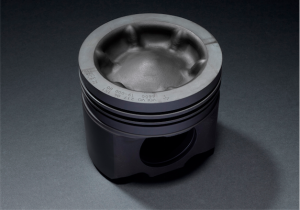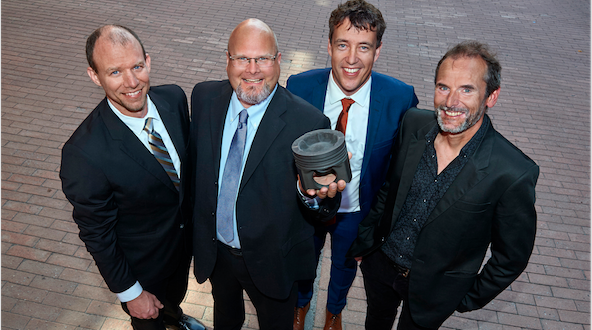
A new wave piston design which lowers fuel consumption in engines of Volvo trucks has won the Volvo Technology Award 2017. The engineers behind the innovation have also been honoured for the design which added waves to the piston crown to improve the use of oxygen thus enabling the Group’s new truck engines to be more fuel efficient.
The innovation lends credence to the industry belief that despite the fact that the internal combustion engine has been in existence for 140 years, during which time it has undergone continuous development, it still offers scope for improvement.
The engineers, Jan Eismark and his colleague, Michael Balthasar, came up with the new wave design, which has now been patented. However, cutting-edge technology was needed to prove that their initial ideas were correct and to determine the exact design of the piston crown. This entailed using computational fluid dynamics (CFD) and filming the combustion process inside the cylinder at high speed.
In the case of a standard piston, the injector is located at the top of the cylinder and the fuel is sprayed toward the sides of the cylinder through a number of orifices in the injector. The combination of heat and pressure causes the fuel to ignite before it reaches the cylinder wall.
The flame hits the wall of the combustion chamber at a speed of up to 50 meters per second, spreads along the piston bowl wall and then collides with adjacent flames at an angle of 180 degrees, while still travelling at a high speed.
When the flames collide, they compete for the available oxygen. At the same time, the oxygen in the centre of the combustion chamber is never fully used.
“For this reason, we wanted to identify a method of leading the flames into the centre of the combustion chamber to make better use of the oxygen there,” explains Jan Eismark.
The result of their work was the inclusion of ridges or waves in the piston crown. The piston has six of these ridges and the injector, which is located in the centre of the cylinder at the top of the piston, has six orifices to ensure the fuel is sprayed between the ridges that lead the flames into the centre.
It must be possible to manufacture any new design cost-effectively in order for it to be used in production vehicles. A large amount of work has gone into developing the piston manufacturing methods to achieve the right balance between the cost of the parts and the benefits for customers. This was followed by thousands of hours of testing to refine the design and verify the durability of the new concept.
This innovative, intelligent solution is now in use in the latest engines from the Volvo Group and brings advantages for both customers and the environment. The more efficient combustion process it delivers has halved the quantity of soot particles emitted by the engine and has also reduced fuel consumption by an average of two percent.
”For heavy vehicles, diesel engine technology will be important for many more years to come,” says Lars Stenqvist, Volvo Group Chief Technology Officer. “I am proud of our engineers who have once again shown that innovative solutions can still make engines more efficient for the benefit of our customers and of society as a whole.”
 ..:: AUTO REPORT AFRICA ::..
..:: AUTO REPORT AFRICA ::..




